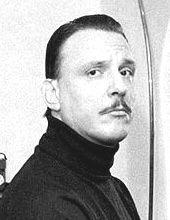REVIEW POTPOURRI – Pianist: Arturo Benedetti Michelangeli
 by Peter Cates
by Peter Cates
Arturo Benedetti Michelangeli
Pianist Arturo Benedetti Michelangeli (1920-1995) had, like Vladimir Horowitz and Sviatoslav Richter , a superhuman lightning speed virtuosity at the keyboard that brought much deserved fame. Unlike Horowitz and Richter who left several different performances of certain pieces that varied in style and tempo, Michelangeli would record, for example, the same Mozart or Grieg Piano Concerto and the tempos and timing would be precisely the same.
However, like Horowitz and Richter, Michelangeli brought a heartfelt musicianship and labor of love to his playing; also, like his two colleagues, he frequently programmed a handful of favorite pieces as opposed to a vast repertoire of other pianists.
A 1965 record (London CS 6446), and one of a tiny handful of studio records he left, featured a program of Sonatas by Domenico Scarlatti (1685-1757), Baldassarre Galuppi (1706-1785) and Ludwig van Beethoven (1770-1827).
With all due respect to the earlier composers and their own contributions to the keyboard literature, I have always found the chosen Beethoven Sonata #32 the most deeply personal of the 32 that he composed for the instrument. So much human emotion ranging from agony to ecstasy with moments of frivolity, whimsicality, jumping for joy, melancholy, is conveyed in its 20 minute length.
Technically speaking it is a knuckle buster while demanding a pianist who can communicate its range of emotions. Michelangeli met these challenges with a powerful performance.
During his career, Michelangeli earned several million dollars but may have suffered from manic depression, possibly revealed in a statement he made to his secretary:
“You see, so much applause, so much public. Then, in half an hour, you feel alone more than before.”
I majored in English and graduated in 1973 from the University of Southern Maine with a B.S. degree , roughly 62 hours of literature classes and only the required hours of other subject areas- 18 hours of history as a minor, as little as possible of science and math and not a single course in economics, sociology, philosophy or foreign languages .
I was a very narrow minded jerk when it came to any interest in a well-rounded education.
One course I enjoyed was Shakespeare with Dr. Stan Vincent and the plays I remembered most vividly were Richard the Third, A Winter’s Tale, the Tempest, King Lear, Othello, the especially vicious Titus Andronicus and the singular masterpiece Hamlet.
Hamlet is a character totally imagined, created and given words and situations with others by the brain cells of Shakespeare according to the early 19th century essayist William Hazlitt.
More importantly, as Hazlitt wrote, Hamlet’s “speeches and sayings…are as real as our own thoughts. It is WE who are Hamlet…It is the one of Shakespeare’s plays that we think of the oftenness because it abounds most in striking reflections on human life.”
And Hamlet’s most striking statement – “To be or not to be – that is the question!” strikes right at the heart of life just as much in the 21st century as it did in the 16th through 20th centuries. And being needs to lead to action, a truth just as important as the one from Socrates more than 2,000 years ago – “The unexamined life is not worth living.”
Hamlet remains a play well worth reading and re-reading for its masterful Elizabethan poetry and prose, its range of characters, treacheries and situations and its abiding sense of reality.
Responsible journalism is hard work!
It is also expensive!
If you enjoy reading The Town Line and the good news we bring you each week, would you consider a donation to help us continue the work we’re doing?
The Town Line is a 501(c)(3) nonprofit private foundation, and all donations are tax deductible under the Internal Revenue Service code.
To help, please visit our online donation page or mail a check payable to The Town Line, PO Box 89, South China, ME 04358. Your contribution is appreciated!



Leave a Reply
Want to join the discussion?Feel free to contribute!